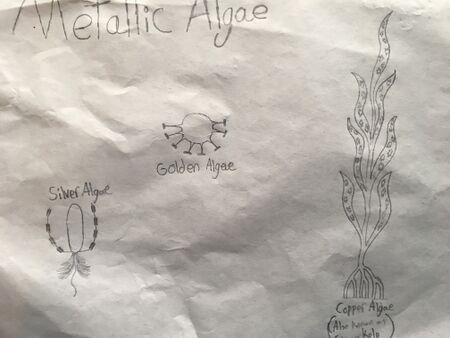Metallic Algae (Zoophytorum Metallicum Spp.)
Metallic algae are similar to the algae on Earth. They come in many shapes, sizes, and forms, and form the base of many ecosystems. The main difference between the two groups is the way metallic algae catch and use light for photosynthesis. While metallic algae use chloroplast like Earth algae, metallic algae form metallic coats around themselves, the sole purpose of which is to reflect more light onto the algae than it would be able to get without the reflective covering. There are many different subspecies, including the free-floating silver algae, the sedentary gold algae, and the kelp-like copper algae.

How metallic algae use metals (Gold Algae as example)
If you look at a gold algae under a microscope, you will see a small ball with the bottom half covered in spikes that have sticky pads on the end. Gold algae sit in the sediment spike half down. As they collect gold flakes from the sediment and nearby water, the flakes are stuck to the inside part of the pad. As light filters down from above, some of it hits the center sphere, where it goes through photosynthesis. Some light, however, misses the center sphere. Normally the light would be lost, but with gold algae, it hits the gold flakes, which are polished like mirrors. Each flake is positioned so that it reflects the light like a mirror onto the center sphere. These "mirrors" are positioned at different angles to catch the sun better during different times of day.